BACK
TO WEATHER-BLOG MENU
New!
Fine Art Prints & digital images for sale-
Welsh Weather
& Dyfi Valley landscapes Slide-Library - Click HERE
| Into
November and a classic mixture of late Autumnal conditions has
variously manifested itself in beauty - foggy, frosty and dewy
mornings, indifference - driving spray-rain at 6pm when it is already
dark - yuk! - and terror - the major Atlantic storm of the year to
date, on November 11th-12th, and the severe flooding in Cornwall in the
early morning of the 17th. Due to financial limitations and the fact
that the Atlantic storm's most active period was after nightfall on the
11th, there are no photos of the storm itself but a look at what its
aftermath provided for the garden - hence the post title! More - in
which I sing the praises of seaweed - on that below. On to some of the prettier scenes..... November 1st dawned with a foggy morning down in the valley so I nipped a few miles up the mountain road to see if I could get clear of it, as I was fairly sure it had formed under a low-level temperature inversion, so that gaining a bit of altitude would get me looking down on a white sea with the hills poking up out of it. The latter wasn't quite the case but since I was there I got busy taking photos: 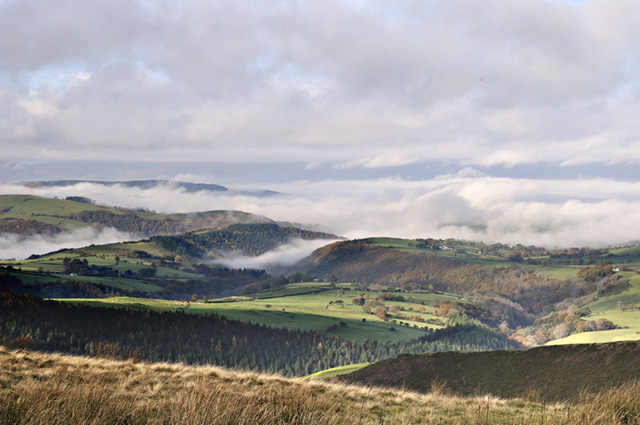 Zooming in got some interesting part-shrouded landscapes: 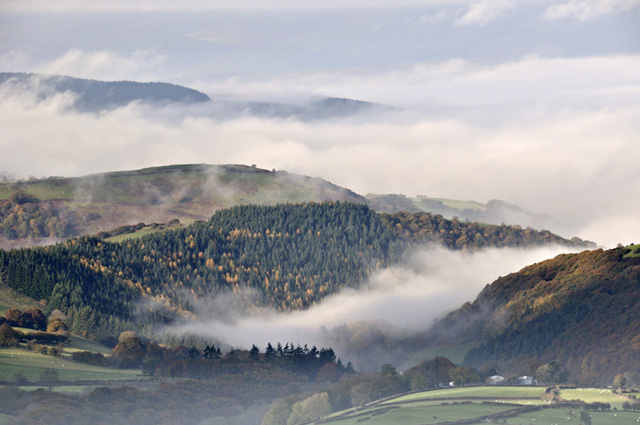 However, it wasn't quite what I had in mind, so I returned to the valley: 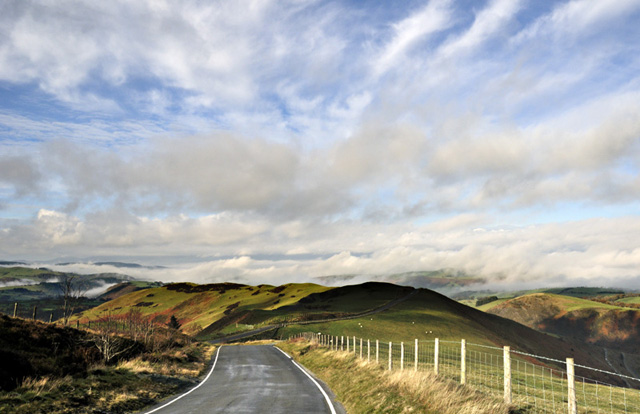 I had better results mid-morning on November 16th, when literally a 10-minute drive from home rewarded me with this view, the fog having largely dispersed but the remaining dew and frost still clinging to the trees in this deep valley which the ascendant sun had only just illuminated. These two images are the best of the batch and I think I prefer the first one in terms of composition. The location is near Glaspwll, in the Llyfnant Valley.... 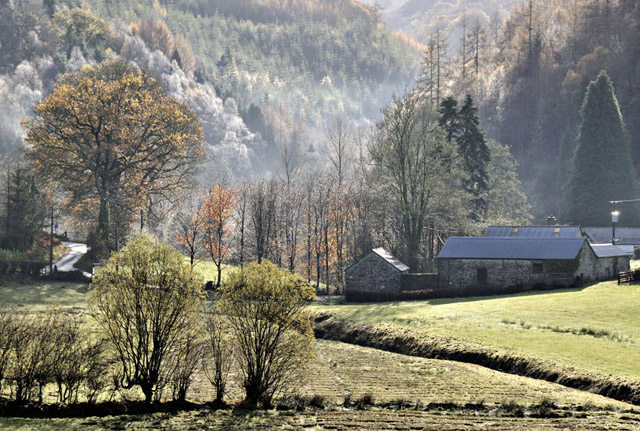  In the veg-garden, it has been the time of year to tidy up a bit, which involved giving hedges and brambles a serious cutting-back and some weapons-grade bonfires. This was taken one Sunday afternoon, prior to surrounding the hot core of the fire with pernicious weeds such as the creeping buttercup - it cannot be composted under normal conditions, so instead it is converted to ash, which can then be applied to beds needing extra potash etc: 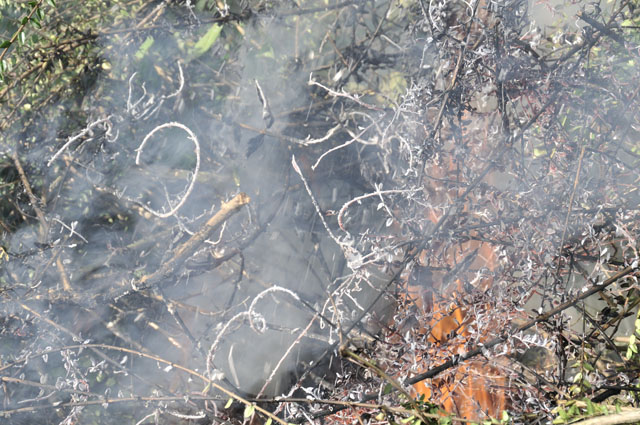 Again owing to austerity, fishing has been limited and on the beach itself severely-constrained at times by the floating seaweed that has plagued us shore-anglers all year. To give an idea of the problem, this mass was pumped in (who needs a gym?) at Tywyn on the night of November 10th, 20 minutes after casting out! Non-anglers might enjoy some details: the clear mainline has a 20-pound breaking strain and the orange shock-leader (to take the pressure of power-casting safely) is rated at 50 pounds. The weed tends to catch along the line like so much washing, and when you retrieve the gear, it slides down the line until it catches on the knot connecting the shock-leader to the mainline, at which point you have to pump. Pumping involves raising the tip of the rod slowly against the dead weight of the weed, then quickly lowering it and winding in the slack. Each time, the weed moves in maybe 2-3 metres. As casts of 80-100 metres are typical, you can imagine what a strenuous, time-consuming process this is! Much more weed than in the photo and you would risk breaking the line due to the weight and the force of the tide dragging the weed about. All in all, a pain in the proverbial - but only in this context....  On November 11th-12th, as the GFS forecast chart below shows, an unusually powerful and deep Atlantic depression moves across the UK. The most violent winds across Wales occurred during the evening of November 11th. For an hour during that evening, Aberdaron recorded a steady 59 mph gusting 81mph - that's steady Storm Force 10 gusting Hurricane Force 12 - and the shipping forecasts for much of the UK's western seaboard warned of Violent Storm Force 11 winds. Fortunately, the tides were on their way back down the cycle from Springs to Neaps - a gale like this coupled with a Spring tide could pose a serious risk of coastal flooding and wave-damage. 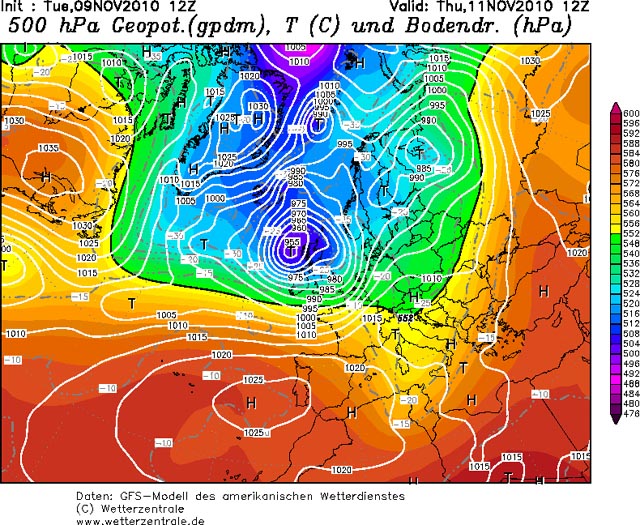 On the morning of Saturday 13th, I headed to Borth first thing, before the tide came in, so see what flotsam and jetsam was washing ashore. Sometimes after a big storm there are clams in abundance, but perhaps on this occasion the tide was just too small. However, the seaweed was coming ashore in huge clumps. These are all taken with my compact that accompanies me on more "mucky" occasions: 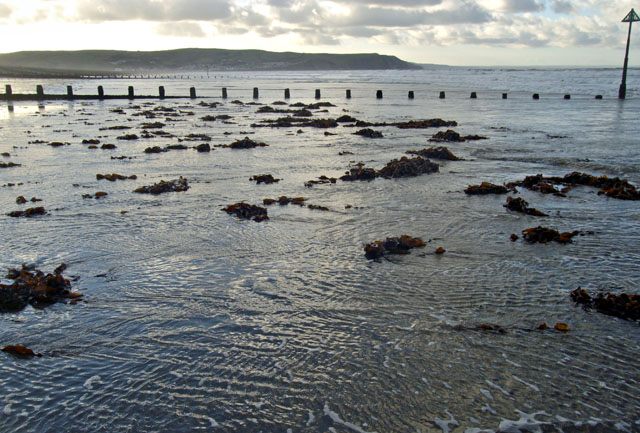 Most of the weed was kelp (Laminaria), with its long, broad fronds and holdfasts attached to pebbles. This had obviously been torn from shingly patches below the low-water mark..... 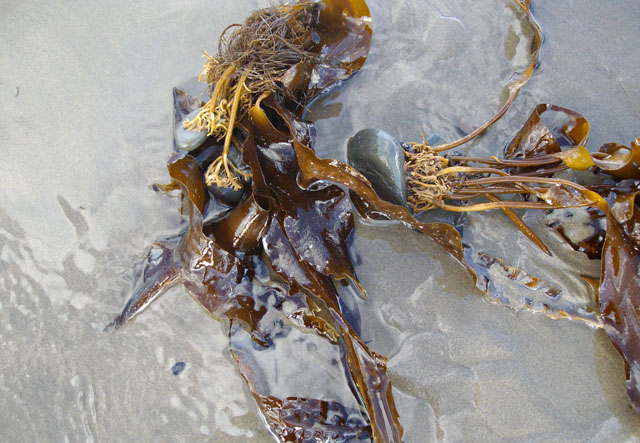 In no time I had filled the buckets I had with me: 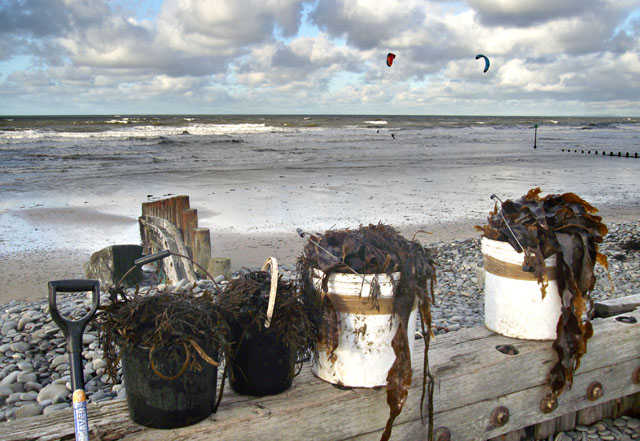 Why collect seaweed? Well, as the inhabitants of other western parts of the UK have long known, it is one of Nature's best free fertilisers! Vegetables have long been grown by ridging what thin topsoil was available over heaped seaweed - occasionally mixed with manure - with considerable success. As Wikipedia notes: Lazy bed is a method of arable cultivation. Rather like cord rig cultivation, parallel banks of ridge and furrow are dug by spade although lazy beds have banks that are bigger, up to 2.5m in width, with narrow drainage channels between them. Although it is largely extinct, it is still to be found in parts of the Hebrides where lazybeds are known as feannagan in Scottish Gaelic, and the west of Ireland. In these places, the method used is normally to lift up sods of peat and apply seaweed fertiliser (desalinated) to improve the ground. Potatoes were often grown in this way in these regions, until the potato blight Phytophthora infestans caused the potato famine in the Highlands and Ireland. It was used in southern parts of Britain from the post-Roman period until the post-medieval period, and across much of Ireland and Scotland until the 19th century. The weed holds moisture and as it rots it warms the bed and releases minerals to the soil. All good useful things. So far in my case it has been simply composted. Prior to dumping the collected weed, I lifted the part-rotted top off the compost-heap, exposing the good stuff below - marvelous!  The resident robin, on seeing a free lunch, was straight on the case! It is fairly used to me these days and just hangs around waiting for morsels.... 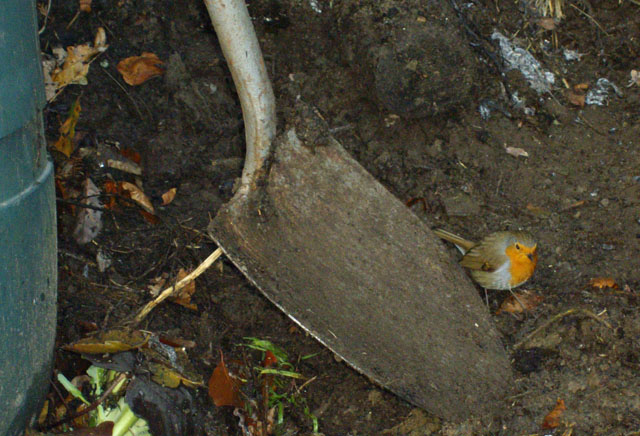 The nicely-rotted stuff was spread on the beds, and carefully placed around the chard.... 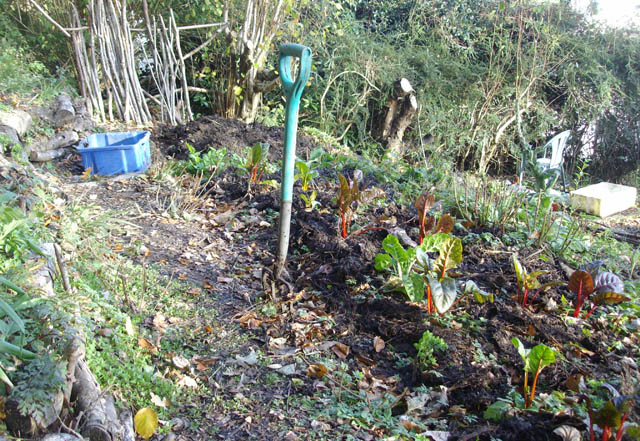 Cutting the compost away reveals its stratified nature. Seaweed, grass-clippings from the beer garden at my local and harvested biomass ("weeds") have all left their traces. Looks like I let things get a bit too dry on the LHS where some seaweed has only partly rotted....  The heap almost dug-out. It provided a good 4-6 inch covering over all of the beds, which the worms will take down over the winter months...  And the part-rotted stuff replaced in the space left and the new kelp dumped over the top: 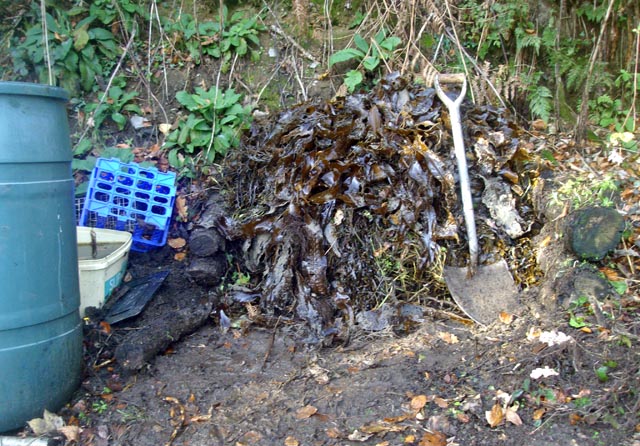 I've got going in earnest on Garden #2 as well. This one's in town and is huge. However, with a surface of couch-grass and brambles and a substrate shot-through with bindweed roots and bracken rhizomes, it was never going to be straightforward. This shot shows the roots poking out... 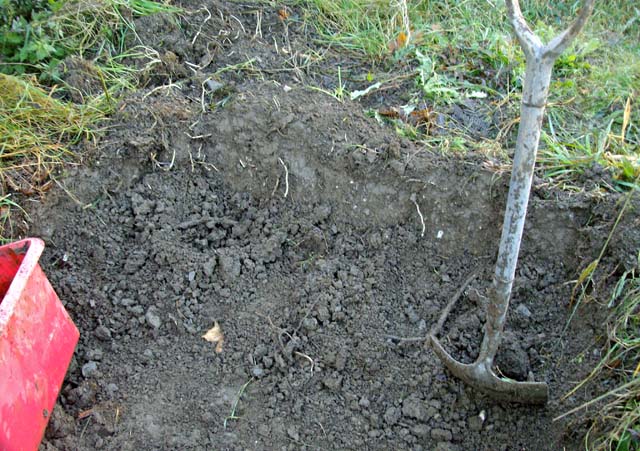 Whilst this one shows the typical contents of a single spadeful: 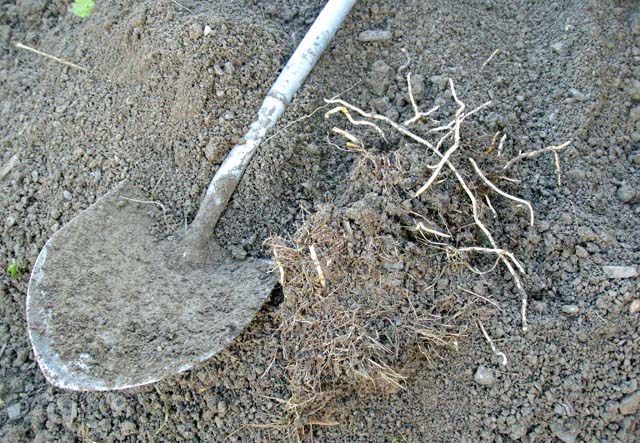 The roots have to be picked out by hand down to the smallest pieces, or the bindweed will be straight back. This has two key implications - firstly the digging can only be done in dry conditions so that the soil crumbles enough and secondly each spadeful has to be carefully sorted. This is not a quick process, but effort over the winter will spare weed-control efforts in the following summer! 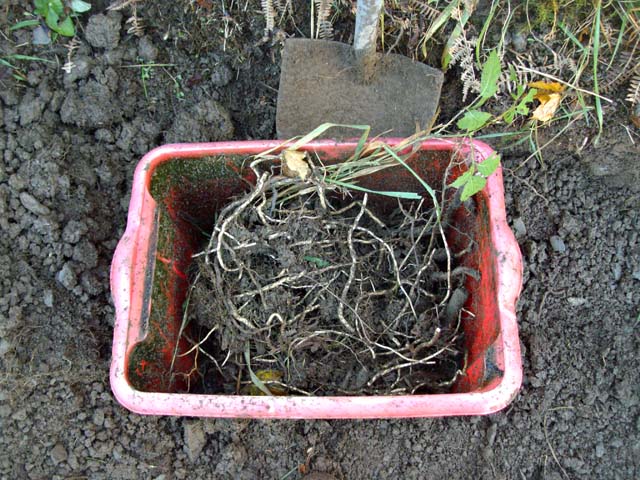 Because bindweed stays active for years, it must simply be removed. The heap of roots is gradually assuming Matterhorn-like proportions! "No-dig", whilst a good practice in other situations, is simply not an option here. Instead, over the winter, as time allows, I plan to excavate the patch, heaping the soil in one corner after picking it clean, then I'll bring in seaweed and manure and construct a series of "lazy-beds" as described above, as an experiment. What I am interested in seeing here is how long it takes to bring such a badly-infested, untended patch of soil into production. Here's a view of the excavated area so far: 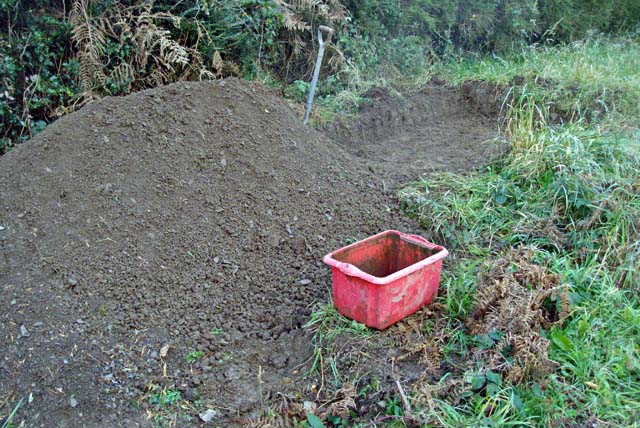 And from the other side. It's a big job but I have several months so I'll just attend to it in dryer spells - a few hours here and a few hours there. It's a great way to keep fit! I'll post the results next year!  Plenty has happened this year in the wider world, and it's the anniversary of "climategate" - when those climate science emails started appearing all over Cyberspace. This is a fine write-up: http://climatesight.org/2010/11/17/the-real-story-of-climategate/ Here, the charts are hinting at colder conditions as we head towards the end of November: whatever happens I'll be adding my comments and images here, as usual! |
|
BACK TO WEATHER-BLOG MENU New! Fine Art Prints & digital images for sale- Welsh Weather & Dyfi Valley landscapes Slide-Library - Click HERE |